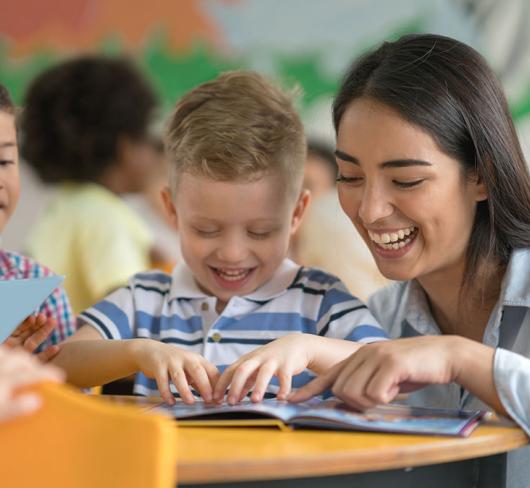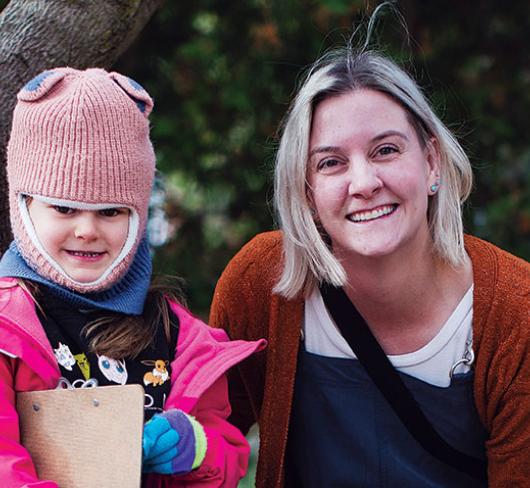Hamster Teaches Literacy - A True Story
Literacy has become a priority in Ontario schools: uninterrupted literacy blocks are now part of the daily timetable in many primary and junior classrooms. But for literacy to genuinely flourish, parents and educators must provide the conditions and support that sustain children’s interests and needs.
Literacy experts emphasize the importance of meaningful experiences to support children’s reading and writing. David Booth, Canada’s internationally recognized literacy guru, states:
"children need to read and write frequently for authentic reasons as they come to realize that being an efficient reader and an effective writer contributes to their communication success and personal satisfactions, and gives them control over their lives.1"
Educator and academic, Alfie Kohn concurs:
"Children are people who have lives and interests outside of school, who walk into the classroom with their own perspectives, points of view, ways of making sense of the world and formulating meaning. What we teach and how we teach must take account of these realities.2"
Booth further emphasizes the importance of authentic needs and interests, especially in encouraging reluctant male readers. In Even Hockey Players Read – Boys, Literacy and Learning, he suggests:
"…boys will need to make choices in their literacy lives – to sense ownership of their reading and writing selves - by having opportunities to select some of the books they read, the topics they write about, and the projects they research. They will care more about the activities that they feel are their own and will want to invest their time and interest in them.3"
Here is a true story that illustrates how simple authentic literacy moments can be achieved.
In my Grade 2/3 class at École Rawlinson Community School, an inner-city school in Toronto, the arrival of a new class pet, a hamster, instigated a string of authentic literacy moments. The 25 primary students were excited and asked a cascade of questions: “What does it eat? “ What does it like to do?” “ What should we call it?” Many had never owned a pet because they lived in shared homes or apartments where pets were not allowed or where families could not afford them.
I answered their questions with one of my own: “How can we find the answers to so many of your questions?” Without hesitating Shaunel, a special needs student, suggested signing out hamster books from the library. “But where would she find them?” Her partner Eva suggested they look in the non-fiction section, so off they went.
Upon their return, the class read Peter Hollmann’s book, My Hamster and Me. They learned all about caring, feeding, and playing with a hamster. The children wanted to know more so I showed them how to use the Internet to access such sites as www.hamsters.co.uk.
We also had to find a name for the hamster and spent a morning brain- storming appropriate names, narrowing the list, and finally voting to determine the most popular name – Coco. Coco was a reluctant visitor. After about two weeks she finally emerged from her cage. I allowed small groups of students to take her from the cage each day during choice or activity time. Often they would build a structure or maze for Coco to explore. The cooperative play, problem-solving, and oral language development that ensued during this unstructured time was amazing!
Not surprisingly, Coco began to appear during our literacy block as well. Students wrote stories about their beloved classroom pet. Ivan’s story was called Coco the Ninja, while Preston’s was Coco Turns into a Human Boy. Suddenly the boys in my class were engaged in writing beyond anything I could have designed. Antonio and Zachary, two special needs boys, wrote long stories: Coco’s Long Journey Home and Coco the Basketball Player.
Students would often begin their stories with an illustration. This was never a quiet time as they usually chatted with their neighbour about their drawing. The desire to match the action or written text to the illustration followed. Guessed or invented spelling was encouraged to develop phonetic awareness and word recognition. Many of the boys particularly would often get other classmates to help them with their spelling. Even my ESL students were eager to follow the lead of the other writers in my class. Songul, recently here from Turkey, excitedly wrote a story called Coco Gots Babies.
The writing, reading, and talk did not stop there. Students whose parents consented were allowed to take Coco home for the weekend. On Friday afternoon the hamster, carefully wrapped, in a clean cage with enough food and vitamins, was sent home with a child for a weekend of fun. Of course, we all wanted to know what Coco would be doing on the weekend, so the child also took home a duotang called The Hamster Report and used it to record significant events and observations, which were shared aloud first thing Monday morning when Coco returned to Room 217.
And what observations and events they shared! Alsa, in Grade 2,wrote:
6:43 am Saturday, Coco is sleeping. At 8:41 am, Coco looks around then she goes back to sleep. I changed Coco’s water and I gave her some food. She came to the front to see why I opened the cage. She started grooming herself then fell asleep again. Coco started shaking but she was sleeping at the same time. 1:42 pm Coco was trying to make her nest. I went to my Uncle’s house. I played a card game. My aunt had a baby. I went to the hospital to see the baby but I couldn’t bring Coco. When we came back, Coco was asleep.
The Hamster Report filled up with drawings, sketches, photographs, and articles about our beloved animal. These hamster literacy moments demonstrated skills the students had, or were developing; for example, Alsa’s ability to tell time. They engaged each and every child, and promoted writing, reading, and storytelling.
Sadly, one morning I found the wire door of Coco’s cage open and the nest empty. Our class quickly put together a search party but did not find Coco. The students created Missing Hamster posters and hung them up around the school.
In the end, we wrote memories and constructed theories about what had happened to Coco. Some students believed that she was kidnapped, some imagined that after seeing a world outside of school, she longed to return to that world. We all learned to share our grief and sorrow and remembered the happy times we had with Coco. Rereading some of the entries in The Hamster Report brought us comfort. We all agreed that despite the pain of losing our beloved class hamster we would do it all over again given the chance!
I know that when I meet these students sometime in the future they probably won’t remember the fantastic math lesson or the pioneer unit we did together. But they will remember the hamster literacy moments that we shared. Even today, many of last year’s students stop and ask me when this year’s class will get a hamster. An endless supply of interesting, authentic literacy moments come through our classroom doors everyday. Authentic literacy moments occur anytime a teacher connects reading, writing, listening and viewing to a child’s lived experience.
A teacher who picks up on discussions or moments of interest shared by students, is building on their background experiences and is helping them develop higher-order thinking skills by drawing on that knowledge. By hunting for a book, newspaper or magazine article, or web page on that specific topic, the teacher is taking further advantage of that literacy moment.
A teacher who has two pupils write, illustrate and/or record their recess disagreement is also taking advantage of an authentic literacy moment as the children think about and discuss their experiences. All of these actions foster environments that are conducive to sharing ideas and opinions – a place where the question is as important as the answer.
Literacy moments are lost daily in most of our classrooms, particularly when a teacher is rigidly locked into a program that doesn’t provide time to deviate from pre-constructed tasks. In expectation-driven classrooms, the teacher decides what is to be learned, discussed, or shared and how this is to be done.
Programs that emphasize structure and predefined expectations require little preparation time. They outline learning outcomes and provide activities, assessments, and rubrics. As with a Betty Crocker cake mix, all the teacher has to do is to add water and stir – the morning literacy block is in the oven!
Tragically, what is lost in these environments is the creativity of teachers and their involvement in the development of relevant, engaging experiences, especially for the unique learners in their classroom. What is also lost is the excitement and satisfaction of making and doing something meaningful with children. Sometimes Betty Crocker literacy moments are necessary. But a constant diet of prepared line masters and prescribed readings is not a balanced literacy diet. Education must be something stu- dents make and do with teachers, not something made in advance or done to them.
When the interest is there literacy is sure to follow!

